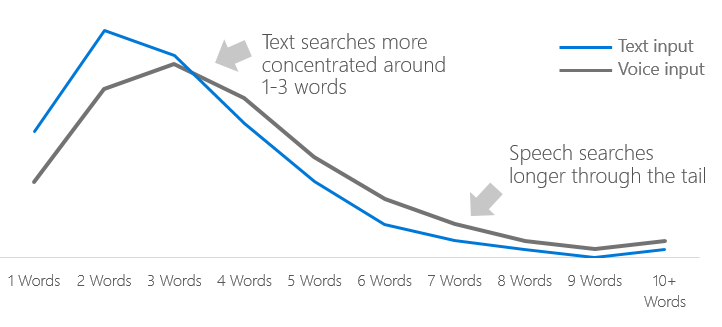How Voice Search Is Changing Your Business

January 16, 2018
Siri, what are the best sushi restaurants near me? If you’re a loyal iPhone user or prefer Google’s search platform on your Android device instead, chances are you’ve searched for answers to your everyday questions by performing a simple voice search like this. Whether you realize it or not, voice search is gaining popularity and changing the way everyday consumers shop, search, and connect with their favorite brands.
Whether you own a local restaurant or work in the marketing department of a company, voice-related search is going to change how you interact with your customers and promote your brand in the future.
Consumer Behavior & You
It’s an old adage that in order to be successful in business, you need to provide your customers with the right product/service, at the right time, and at the right place. As consumers have turned to mobile devices to search for everything from t-shirts to coffee, companies have changed how they deliver on this adage and provide information to users across multiple devices.
To stay competitive in their industry, companies have had to tailor their online content to reach users who are using voice search across different devices. This includes ensuring their websites are responsive to different devices, creating Google AMP pages, and even adjusting the keywords in their content strategy to mimic voice search patterns. As more and more consumers perform searches with voice search technology, businesses are refining their marketing and communication strategies to meet this changing need.
Who Uses Voice Search?
If you’re still unsure about the growing popularity of voice search, here are a few statistics. According to a study by Location World, 40% of adults perform at least one voice related search per day. This could be anything from checking the local weather to finding the latest deals on shoes.
Many professionals think of voice search strictly for smartphones or even tablets. Voice search spans across multiple devices and includes things you might even have in your home like an Amazon Echo, Google Home assistant, or desktop computer with Microsoft’s Cortana search feature. With all these different devices, it’s not surprising that some experts predict 50% of search queries will stem from voice searches by 2020.
What this means is that everyone from millennials to baby boomers are using voice search to more easily find what they need in seconds. Gone are the days of having to sit down at a desktop computer or pull up a browser in your smartphone to find all the information you need. Companies are now facing a growing demand to tailor their content to voice searches in order to be more competitive in a changing marketplace.
How Will Voice Search Change Your Marketing Strategy?
Keywords
For years marketing professionals and SEO gurus have stressed the importance of leveraging the power of your content’s keywords to rank in organic searches. From performing extensive keyword research to consulting blogs and other online resources, professionals both novice and expert have spent considerable time worrying about keywords. Voice search is changing up the keyword game and starting to mimic more conversational queries.
Previously copywriters and content strategists would focus on one or two keywords when organizing content for pages of a website or blog. As consumers are performing more voice searches, professionals are beginning to tailor content around long-tail keywords. Instead of solely focusing on one keyword for a blog or page, keywords are being organized into groups of two or more to more closely match user’s voice patterns.
For example, a common keyword in the eCommerce world might be “t-shirts”. Instead of optimizing pages for that single word, now pages are being optimized for long-tail voice search queries like “retro cotton t-shirts” or “comfiest wool shirts”. The graphic below shows the spike in popularity of long-tail keywords and demonstrates that a majority of searches are closely related to clusters of two to three keywords.

Local Search
Countless blogs across the internet stress the importance of local search in relation to SEO. From updating your Google Business Listing to networking with local directories, you can’t deny the value of a solid local search strategy. Voice search is putting a new spin on this SEO topic and changing how businesses approach their strategy.
For voice searches like “Burger places near me” or “How’s the weather?” search engines like Google are going to use several methods to compile a list of relevant results. First, the device (Your phone, tablet, Amazon Echo, etc) is going to determine your location. Next, your device is going to retrieve results from a search database that matches your location and search query.
By highlighting your products/services on your website and ensuring your local search listings are up to date, you will have a better chance of your business showing up in a search result when a user performs a voice search. Whether you sell the finest baked goods in your neighborhood or are a leading manufacturing in your city, voice search is going to change the way you do business.
When it comes to how customers find, interact, and communicate with their favorite brands, voice search is rapidly changing the world we know. From tapping an icon on your phone to simply speaking text to a wireless device, voice search is making it easier for all of us to find everything from t-shirts to coffee in seconds. If you want to stay competitive in your industry and continue to stay at the forefront of search results, you need to start thinking about developing a voice search strategy today!
Ready to take your brand to the next level? Think VIG!


